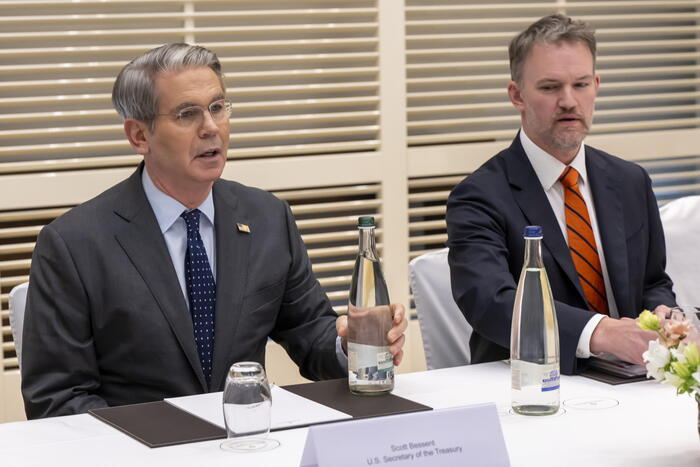The United States and China have opened high-level trade talks in Geneva, launching a new round of negotiations as both countries confront the economic toll of an escalating tariff war. U.S. Treasury Secretary Scott Bessent and Chinese Vice Premier He Lifeng are heading the delegations, with discussions focused on the sweeping tariffs imposed under President Donald Trump and the sharp collapse in bilateral trade.
Ecco l’adattamento integrale in inglese nativo, nello stile AP e con tutte le dichiarazioni e dati mantenuti. La struttura lessicale e informativa è fedele allo spirito originale, ma la scrittura è stata resa naturale, giornalistica e in linea con gli standard di una cronaca economica americana.
Expectations remain low. Earlier this week, Bessent urged the public not to expect a “major trade deal” but acknowledged the meeting as a “crucial step” in managing relations between the world’s two largest economies.
The negotiations come against the backdrop of an unprecedented trade standoff. The U.S. has implemented a baseline 145% tariff on most Chinese goods, prompting Beijing to retaliate with its own 125% duty on American products.
Even a 50% reduction in tariffs may not be sufficient to restore trade to functional levels. According to CNN, economists widely view that threshold as the minimum necessary to gradually rebuild business ties between the two powers.
On Friday, just hours before Bessent and U.S. Trade Representative Jamieson Greer departed for Switzerland, Trump took to Truth Social to float a new position. “80% Tariff on China seems right! Up to Scott,” the president wrote, while demanding that Beijing “open up its market to USA.”
Meanwhile, the impact of tariffs is rippling through the U.S. economy. Goldman Sachs analysts said this week that core inflation could double by year’s end, reaching 4%, driven largely by Trump’s trade policies. And even if a deal were struck, prices would not immediately fall: ships carrying goods taxed at 145% are currently arriving at American ports.
The list of Chinese products embedded in American consumer life is extensive — from shoes and clothing to semiconductors, home appliances, toys, baby goods, sporting gear and office equipment. But imports are now in steep decline.
According to the National Retail Federation, total U.S. imports are expected to fall at least 20% year-over-year in the second half of 2025. Shipments from China, however, could drop by as much as 75% to 80%, JPMorgan has forecast.
The slowdown has already begun to show in GDP data. The U.S. economy recorded its first quarterly contraction since early 2022, as many importers rushed to stockpile goods ahead of the tariff hikes — a cushion that has now been depleted.
China, too, is feeling the strain. Outbound shipments to the U.S. fell to $33 billion in April, down sharply from $41.8 billion in the same month last year — a 21% plunge, according to CNN’s analysis. Manufacturing activity in China also declined at its fastest rate in 16 months, adding urgency to Beijing’s internal push for new economic stimulus.
News of the Geneva summit has revived hopes of a potential thaw. Together, the U.S. and China account for more economic output than the next twenty economies combined, according to World Bank data. A detente between the two would send ripples across the global market.
But tensions extend beyond trade. Trump said this week he plans to raise the case of jailed Hong Kong publisher Jimmy Lai during the negotiations. Lai, the former owner of the now-defunct Apple Daily, is currently on trial under China’s national security law and faces a possible life sentence.












